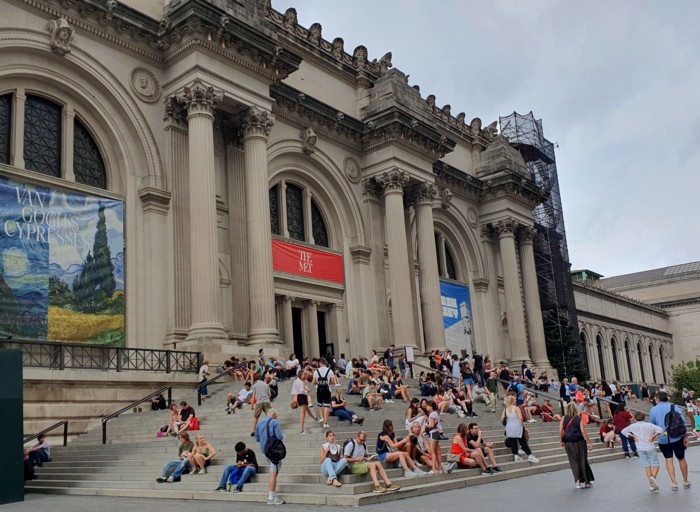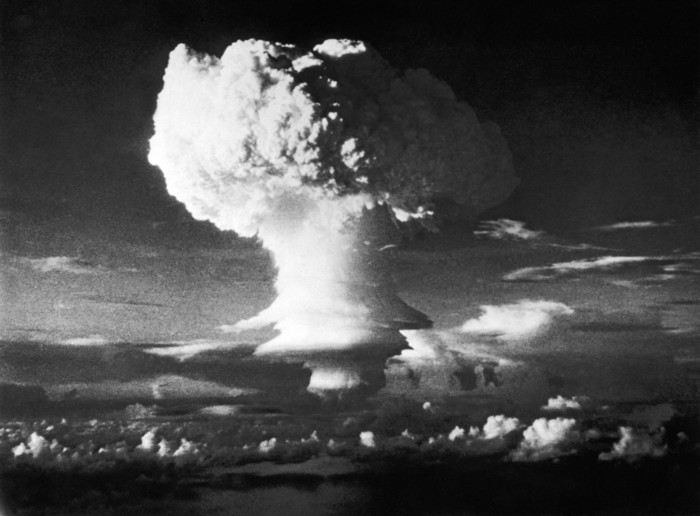In Part1, in July 2023, Wendy and I travelled north from Los Angeles to Seattle, Washington, and then Vancouver, in Canada, from where we made our way east to Montreal.
In Part2, in August 2023, we flew from Montreal, Quebec, Canada, down to Miami, Florida, then Ubered to Fort Lauderdale, where we joined a western Caribbean cruise.
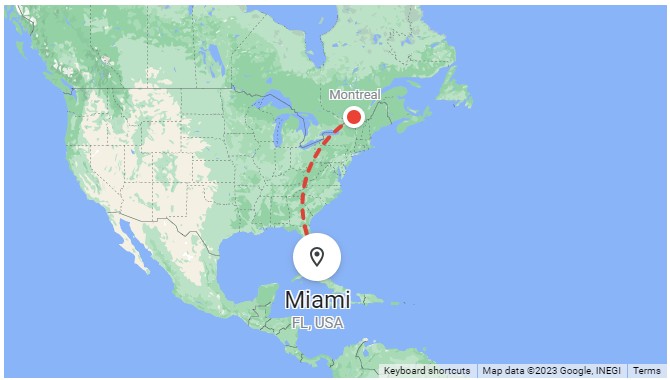
At the end of the cruise, we flew all the way back up to Boston.
From Boston we hired another car to drive, down the coast, to New York.
After New York we flew to Salt Lake City, Nevada, then on to Los Angeles, California, before returning to Sydney.
When at home, each morning, unless it's raining heavily, I walk down to our local beach and back. And, in a normal year, that is usually quite sufficient time at a beach for me.
 Panorama of Edwards Beach, Balmoral - our local
Panorama of Edwards Beach, Balmoral - our local
There are not a lot of beaches to rival it - and they are mostly close at hand - not on the other side of the planet
I don't sunbake and don't find beaches relaxing. So when travelling overseas visiting a beach is usually well down my list of things to do.
I'd been to Miami, in the late 1970's, a sort of: 'Queensland Gold Coast on steroids' (or perhaps Xanax) and it was not my idea of a good place to spend much, very expensive, travel time.
But as we were going to be in Fort Lauderdale to board a Caribbean Cruise, it seemed a good opportunity to see what's changed in the past half century.
And quite a bit has.
In Miami city new high rise apartments have sprung up near the water and there is now a very elaborate elevated tram (Metromover) and train (Metrorail) system that, in addition to providing airconditioned transport, has the benefit of providing some shade and shelter from frequent downpours, in what is generally an unpleasantly hot and humid climate. When it rains in Miami it pours but at least it's cooler.
Looking for something of interest, aside from creative architecture among the new residential skyscrapers, I discovered the 'HistoryMiami' Museum, the largest history museum in the State of Florida (not a huge challenge). The history museum in Miami isn't vast, like the one in Toronto, but it has its moments.
It's housed in what was once an industrial building and is part of a downtown revival plan, adjacent to an elevated train/tram station. I found it very interesting. As the on-line description says it: "covers 12,000 years of history and examines the development of the region and its people against key historic events, including early Native American settlement, the Spanish Exploration period, and World War II up to the present."
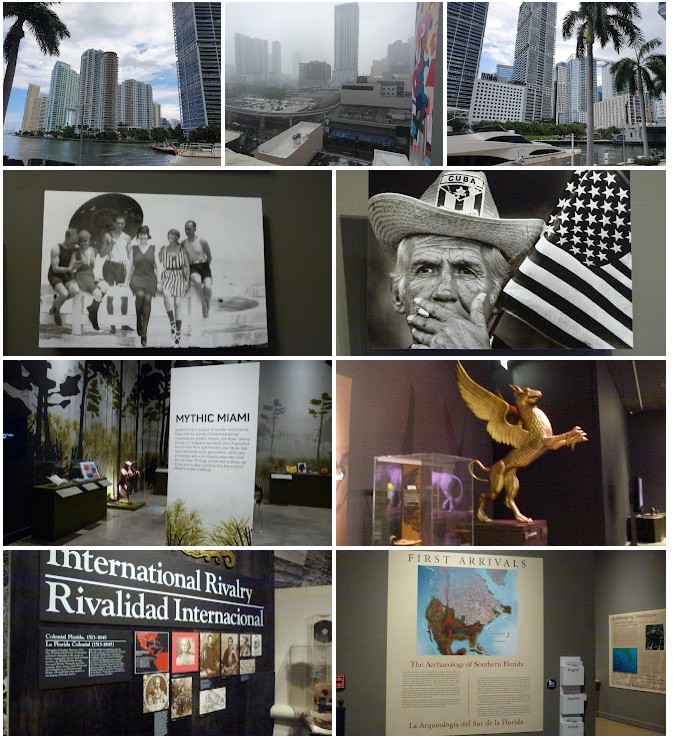
Here we learn of the first human migration into the Americas, from central Asia during the last great glaciation, when sea levels were very low. We learn of the plight of the first humans to settle in Florida and more recently of the struggle between various European powers to control the region and, in some cases to win souls - the hearts and minds, of the people.
First the French, English, and Spanish forced native people off their traditional lands into this then remote water-logged jungle to do their bidding. Then, when it became US territory, they were rounded up and forcibly relocated, along with other native tribes, west of the Mississippi.
But not everyone got caught, so some, remained and found ways to make a living.
Florida joined the Confederacy in its attempt at independence. As a consequence, it suffered 'reconstruction' after the Civil War, when 'carpet baggers' from the north took over. Then came the wars with various Spanish interests. Including Cuba and Hispaniola.
In modern times Cuba has had a great deal of influence here as many people are from Cuba or have Cuban ancestors.
In 1959 many working-class Cuban people and some intellectuals supported Fidel Castro's Communist revolution against the corrupt Batista regime that, with the help of the American Gangster Meyer Lansky, had turned the one-time democracy into a gambling, drugs and prostitution playground.
As a result, the wealthy, much of the middle-class and not a few crooks, fled to Florida, vowing to return to set things right. Thus changing US politics forever.
 Click on the picture above for what we learned Cuba
Click on the picture above for what we learned Cuba
It's worth noting, that partly as a result of these events and historical accidents, we've come from one largely non-English speaking city (Montreal) to another. Many people here have Spanish only. Others, mainly the decedents of slaves, speak Creole (a version of French) among themselves.
***
Walking back from the museum in Miami that day, something was rattling along behind me. Perhaps someone pushing a shopping cart? I looked around. Nobody!
I looked down. It was this little guy. He stopped at the crossing with me.
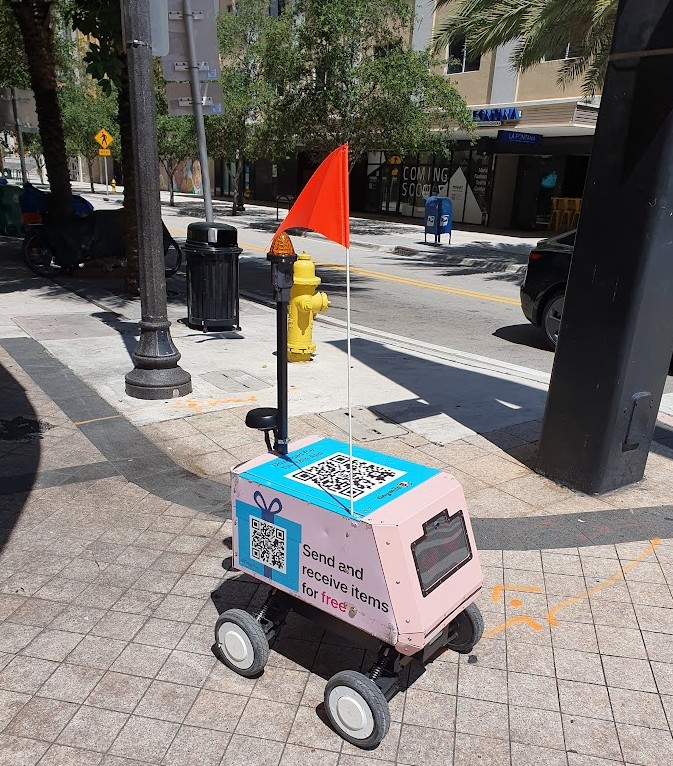
There was no traffic so I crossed. I left him standing there - obediently - at the red light.
A day later I was returning to our hotel, several kilometres away, in a different part of town. and there, coming to meet me, was 'he, she or they' again!
I think 'they' must be stalking me! They blinked harts at me!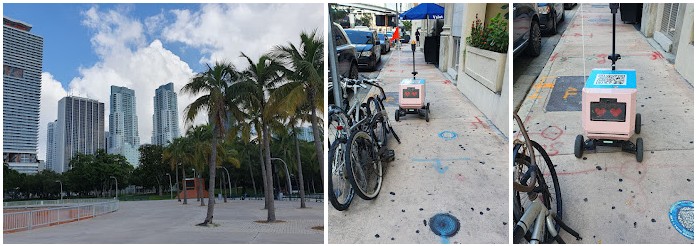
Miami Beach(s) is(are) on the ocean side of a 20 mile long series of islands, separated from the mainland by Biscayne Bay. A series of causeways provides access, from the city, by car or local bus.
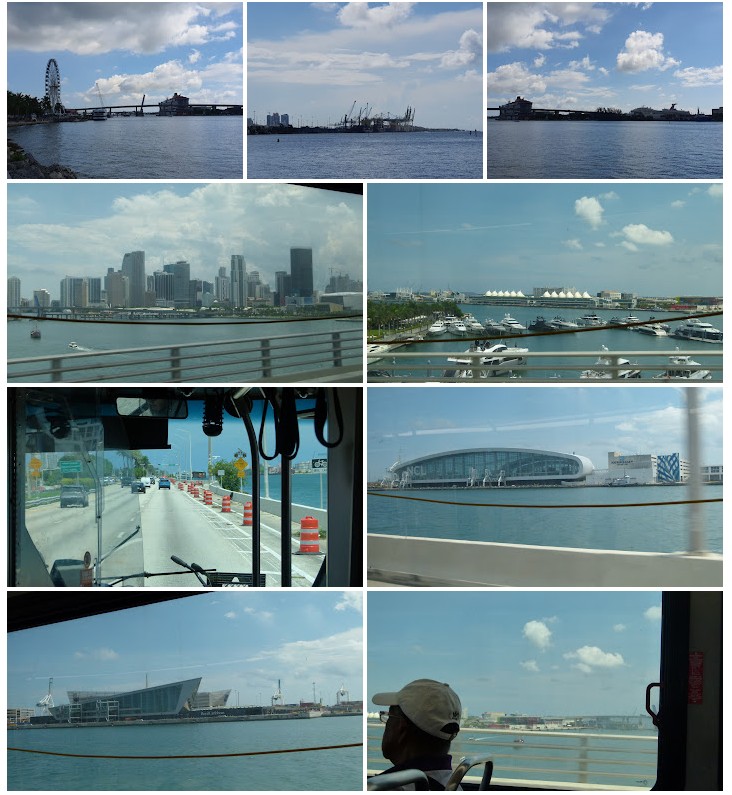
We took a local bus, allowing us the opportunity to get a better look around. The way over was interesting. Various cruise ships have a provisioning base here and there are many marinas and private pleasure craft, as well as container handling facilities. There's lot's of money being made.
There's an historic area at South Beach that's been saved from the high-rise development and is preserved as a 'special architectural zone', featuring the art-deco architectural style: 'The Art Deco Historic District'.
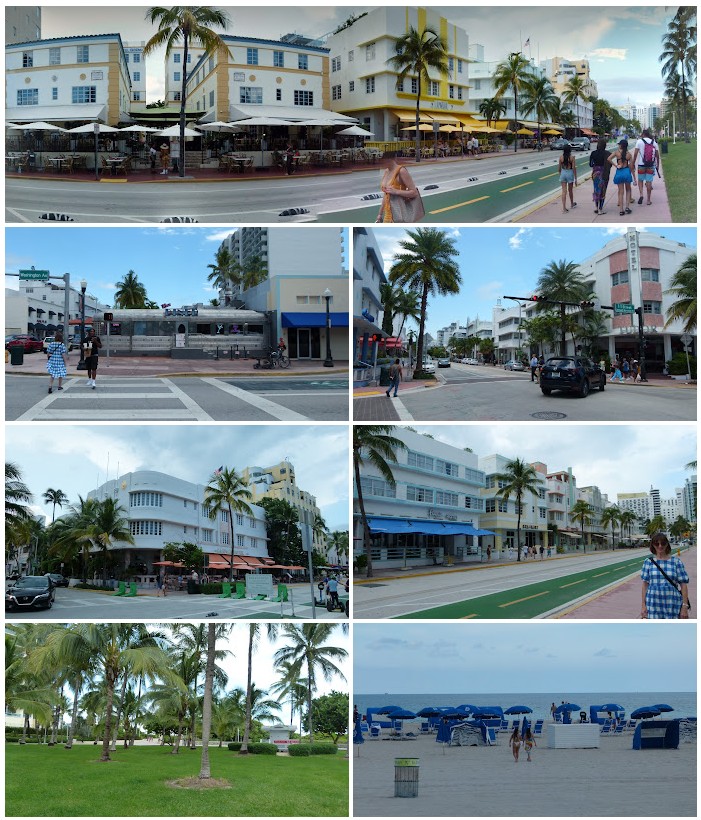
According to the website: "The styles of the 1920s and 1930s remain vibrant in the Art Deco Historic District in Miami Beach, home to the nation’s largest concentration of the sleek and bright architectural style. The district, which has been listed on the National Register of Historic Places since 1979, contains some 800 designated historic buildings, though some of them represent other modern architectural styles from different eras of Miami’s history."
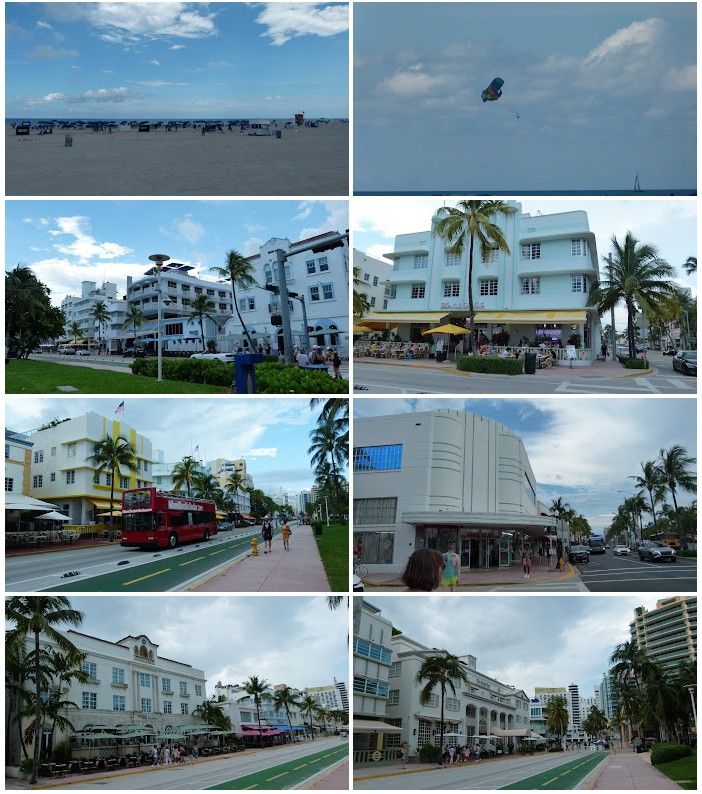
At the rather grey beach there was little or no surf and most people sun-baked - deliberately. The air was hot, humid and oppressive. I unbuttoned my shirt - the closest I was prepared to get to joining the prevailing skin-fest.
We spent another day in Miami, wining and dining and so on, before calling an Uber to drive to Fort Lauderdale.
Fort Lauderdale, is where we were to embark on an Eastern Caribbean Cruise. Here I realised that I'd been a bit too critical of Miami, that had begun to grow on me. Perhaps it was fungal? Fort Lauderdale was my new new bête noire.
Despite the apparent green, much of Fort Lauderdale is an urban desert. We didn't have a car and it's not pleasant to walk around.
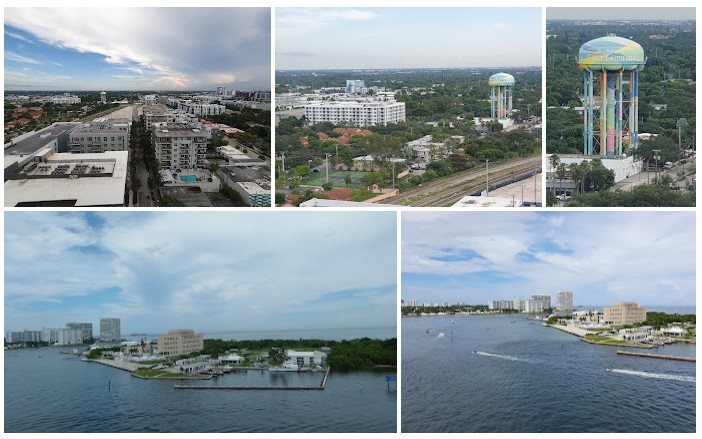
But very shortly we would be on the boat.
We had booked a Western Caribbean Cruise, that will go as far south as the British Virgin Islands before returning to Fort Lauderdale, via the Dominican Republic.
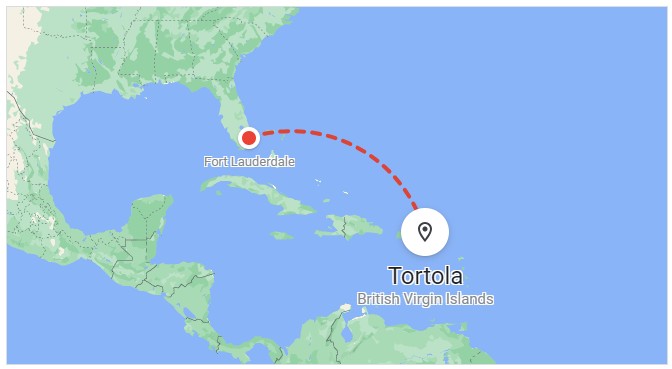
The Celebrity Equinox is smaller than the Celebrity Edge that we sailed on last year and a lot more crowded. Yet, not oppressively so - little or no queueing.
Our 'stateroom' is similar (Click here to see the difference).
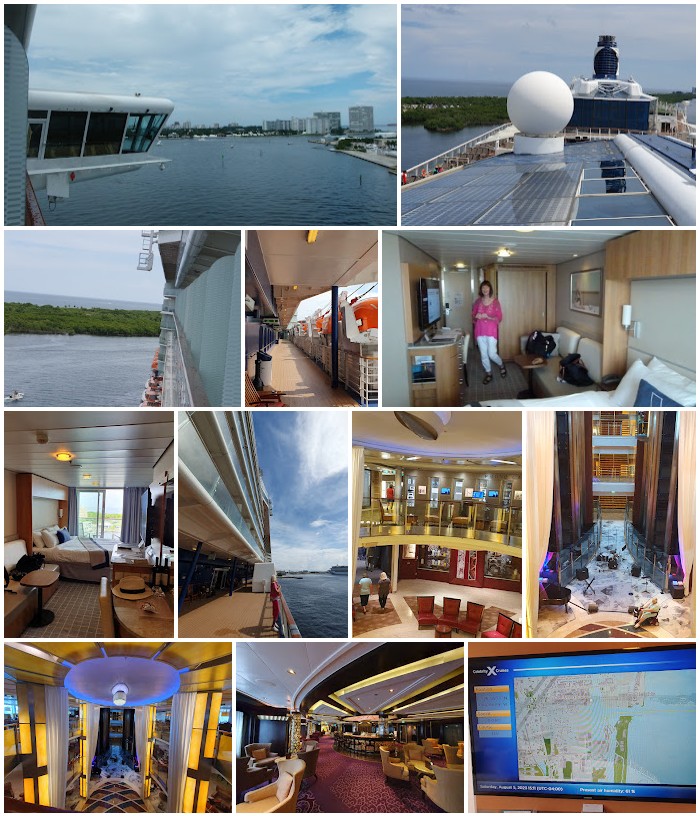
The first day was at sea, giving us time to explore the ship and to meet some other passengers, generally over dinner or perhaps playing trivia. As usual on Celebrity ships, the food is excellent.
The evening entertainment is - entertaining.
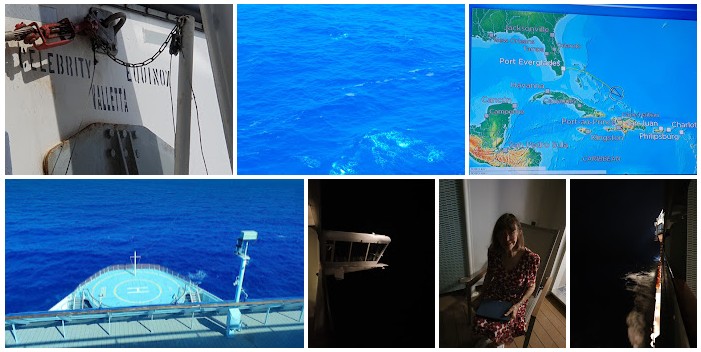
San Juan, Puerto Rico, has an interesting fort and a pretty township. I kept hearing 'America' from West Side Story playing in my head.
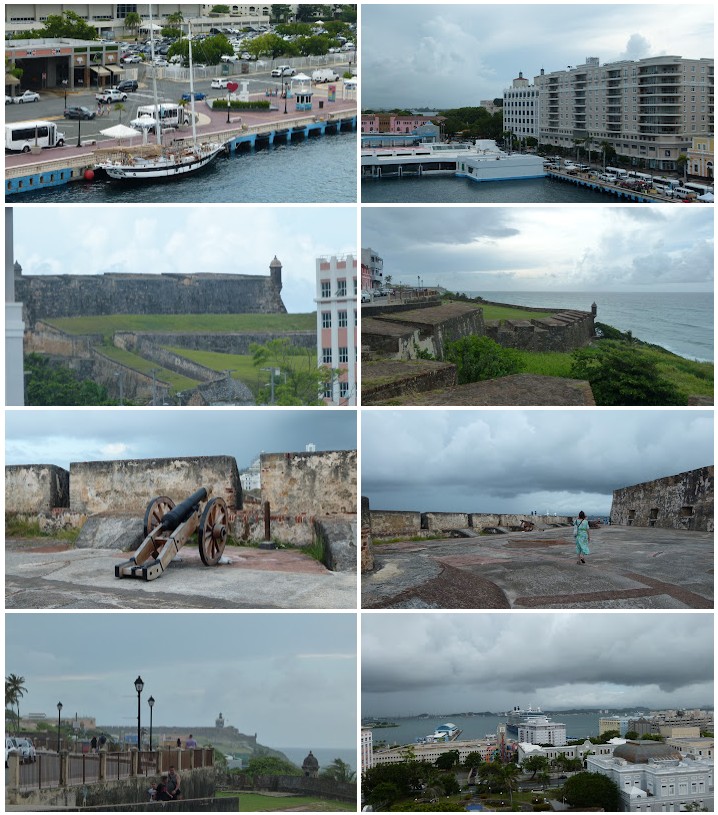
Once a giant Spanish Fort, San Juan resisted all comers, including the British, until the United States bombarded it from the sea, then landed a ground force and took it, as they did in Cuba and Hispaniola. Unlike those islands, the US has held it ever since, as it remained, until WW2, strategically key to the naval control of the Caribbean.
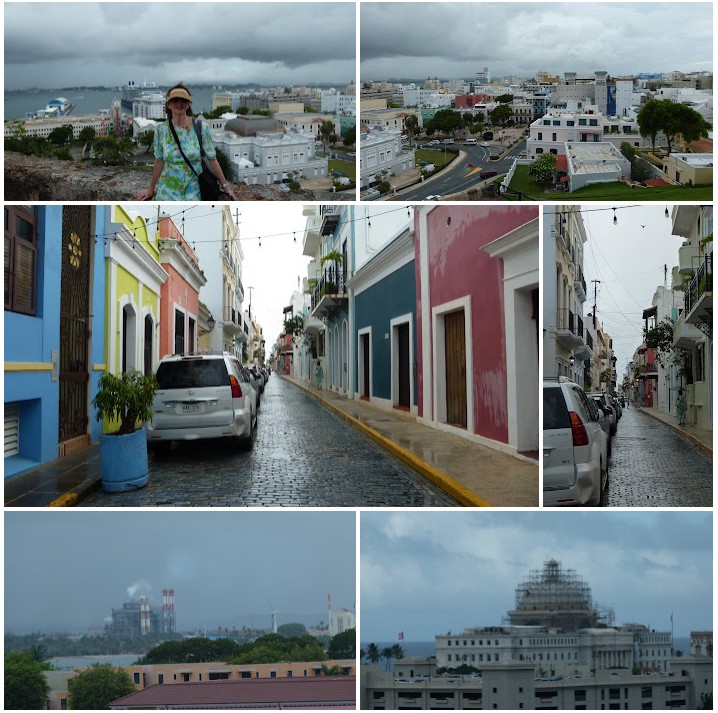
Now I'm hearing America again.
| "I like the city of San Juan I know a boat you can get on" |
Here we are on St Thomas, US Virgin Islands.
Once a Danish possession, it was purchased by the United States in 1917 as a base for the navy, during WW1.
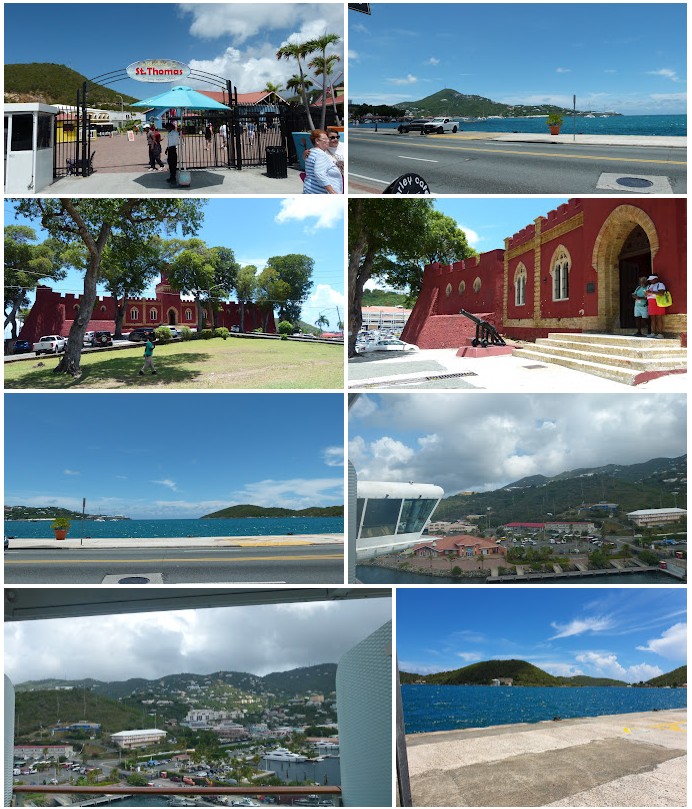
This was the first time we had Wi-Fi since embarking because we economised on the ship's 'extras'. Other passengers have been complaining about it. When do people not complain about Wi-Fi? But I think we may have been taught a lesson - it's hard to do without.
St Thomas was previously Danish so, like Denmark did long ago, they drive on the left. Yet, as in the US, the cars here are left-hand drive. It's a reverse of taking an English car to the Continent or in Myanmar where they drive right-hand drive cars, from Japan, on the right.
It's strangely disorienting, and not very safe.
It's a small island and not a big job to reverse the traffic lights. On September 3, 1967 the whole of Sweden, road tunnels and all, switched sides overnight. Even Myanmar switched overnight (the wrong way). Yet something about the US psyche resists change. They can't go metric either.
The island seems idyllic but it was far too hot. While Wendy shopped, I just had to find a bar and sit in front of the fan, drinking pina coladas ?.
According to Wikipedia: "Tortola is the largest of the British Virgin Islands in the Caribbean. It features several white-sand beaches, including Cane Garden Bay and Smuggler’s Cove. Road Town, the capital of the British Virgin Islands, has a harbor dotted with sailing boats and is known as a yachting hub. In the island's southwest, forested Sage Mountain National Park offers trails and sweeping views over neighboring cays."
We walked into town but ended back local bar, a stone's throw from the ship, enjoying a refreshing libation and free Wi-Fi.
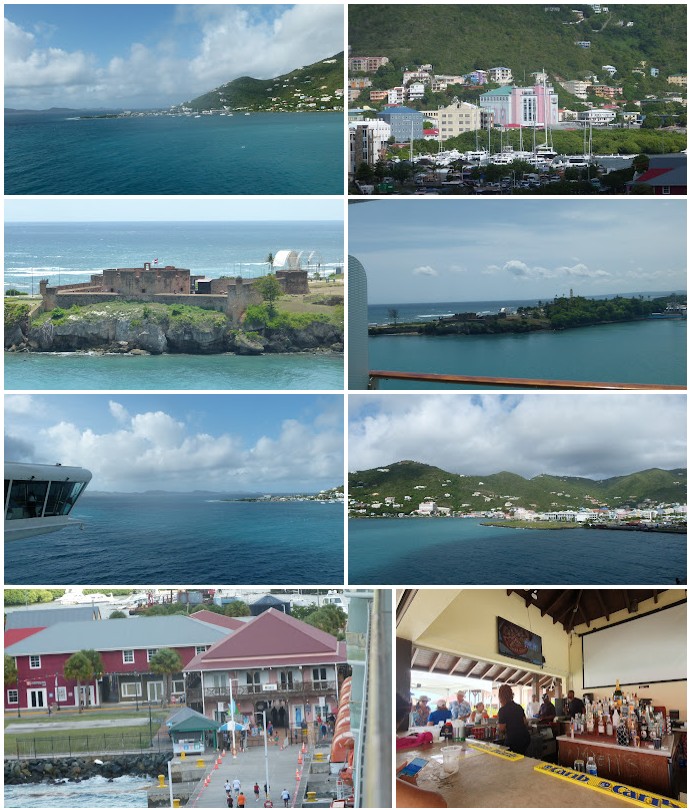
Again, they drive on the left, in mostly left-hand drive cars (there is a mix). It's more understandable here - they are British after all.
Puerto Plata in the Dominican Republic was our last port before returning to Fort Lauderdale. The port has been setup as a mini-resort, with bars, water sports and retail outlets, designed to separate cruise-ship passengers from their money.
There is a local fort, Fortaleza de San Felipe, that we though might be worth a look, perhaps of historical interest and more than twenty years old. But alas, as it was nearly 2 kilometres (an almost 5 minute drive) away, it would cost us $120, each, to be taken there.
We considered walking but the cocktail bars beaconed. Wi-Fi again.
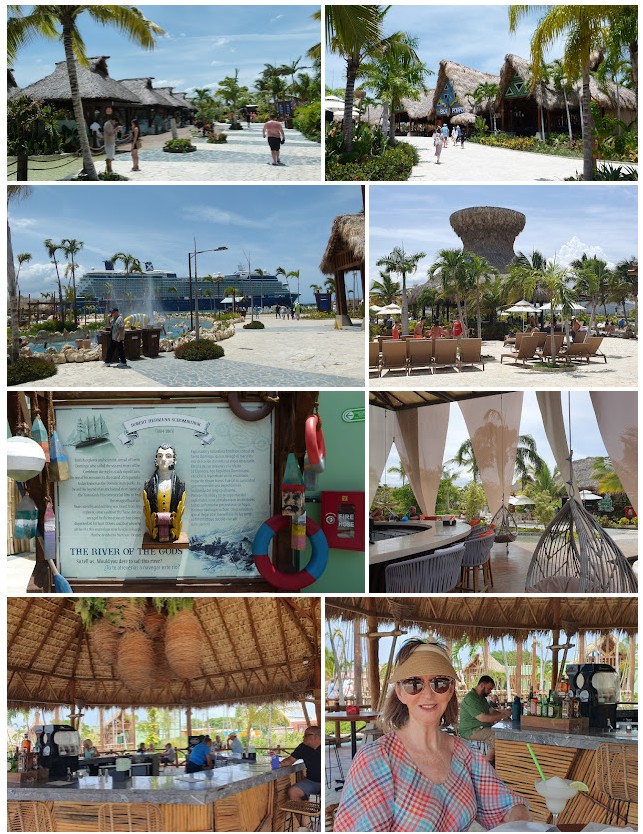
The Dominican Republic shares the island of Hispaniola with the country of Haiti. On the UN's Human Development Index, Haiti ranked 163 out of 191 countries in 2021, one of the poorest countries on earth. The Dominican Republic, on the other hand, has one of the highest rankings in the Latin America and Caribbean (LAC) region. Same island, different cultures. So, not all cultures are equally beneficial to their possessors.
***
And so it was another relaxing sea day - back to Port Everglades, Fort Lauderdale
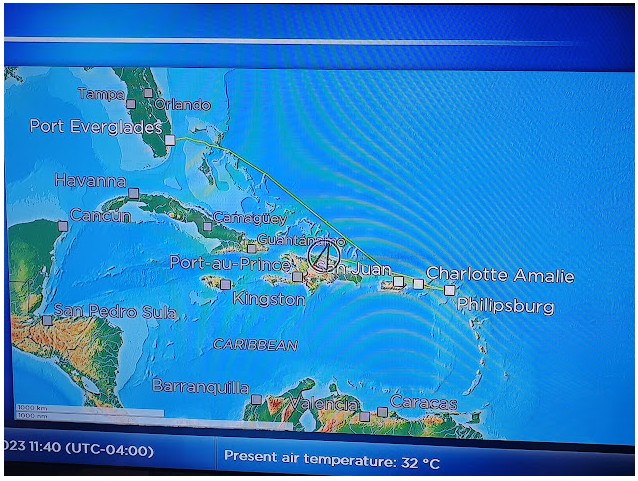
Our next stop would be Boston
Getting to Boston from Ft Lauderdale turned out to be a challenge. Four changes of flights and a change of airline and airport, due to cancellations; but mainly a lot of airport waiting. Then, collecting the rental car in Boston took over an hour.
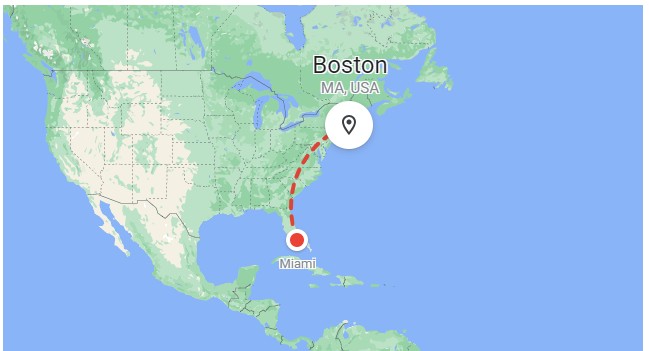
In Boston, the tunnel to our hotel was closed. Yet, both TomTom and the in-car GPS kept taking us back to it. Anyway, after a long and trying day we got there, still in time for dinner at a colourful Mexican restaurant across the road.
Refreshed the following morning, we drove up to Salem before coming back into town.
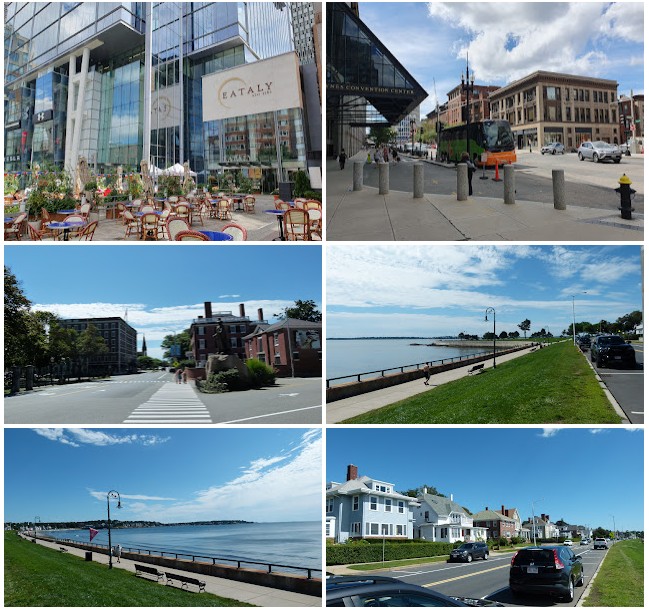 You can see a lot more of Boston, from our last trip there in 2007,
You can see a lot more of Boston, from our last trip there in 2007,
by clicking on the pictures above
Salem is an historic town, famous for the Witch Trials that took place here between February 1692 and May 1693, after some 200 people were accused of witchcraft by a group of girls. Trials were held and twenty people were either hanged or tortured to death. Another ten were jailed. This horrific descent into madness that gripped a whole community, is said to have had contributed to the secularism of the Founding Fathers, separating Church and State, and to have had a lasting influence on the American psyche.
Arthur Miller's 1953 play, The Crucible dramatises this stoy as a metaphor for Senator Joe McCarthy and the House Un-American Activities Committee's contempoary 'rooting-out' of aledged communist sympathisers. This is also referenced in the museum in Salem.
Today, Salem is beautiful, full of restored historic buildings and a delight to walk around, populated by friendly, apparently lovely, people. The real America? It's worth a visit, even if you have no interst in the history.
If you are interested in the Witch Trials, there is a museum, in an old church, in which there is an hourly performance, recreating aspects of those seventeenth century iniquities and that draws some parallels with recent history that are quite interesting.
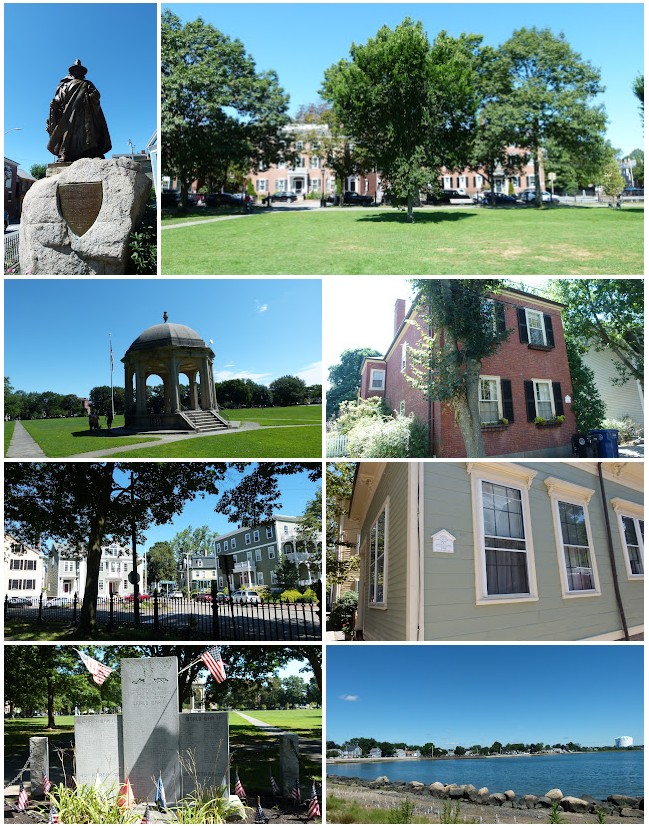
As readers of my website will know I'm fascinated by human religions, including witchcraft, itself a form of religious belief.
Previously I've commented on Luther and his obsession with witches and the corresponding spread of witch-hunts across reformation Europe.
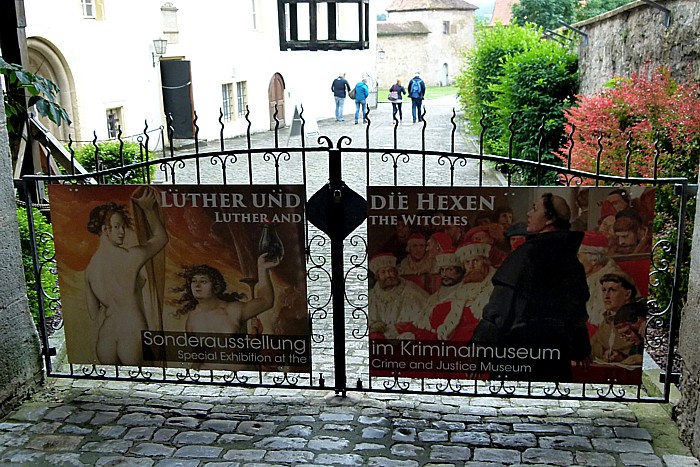 Luther and the Witches - in Rothenburg, Germany - click on the gates to learn more
Luther and the Witches - in Rothenburg, Germany - click on the gates to learn more
And you may have read my novella: The Craft (on this website) that's about witchcraft in an imaginary futuristic dystopia.
Providence, the capital of Rhode Island, is a pretty city that, like others in the New England region is both prosperous and and politically liberal. Generally 'nice'.
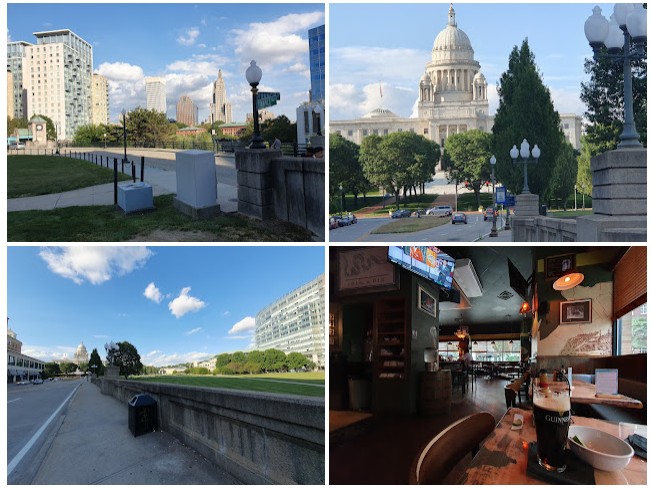
And one can get a Guinness in a pub.
Rhode Island is a small State, so Newport, world famous for sailing. is not far away as the crow flies, yet further by road.
There were some very nice residential areas along the way. And some very patriotic ones, judging by all the flags; and the red-white-and-blue centre-line.
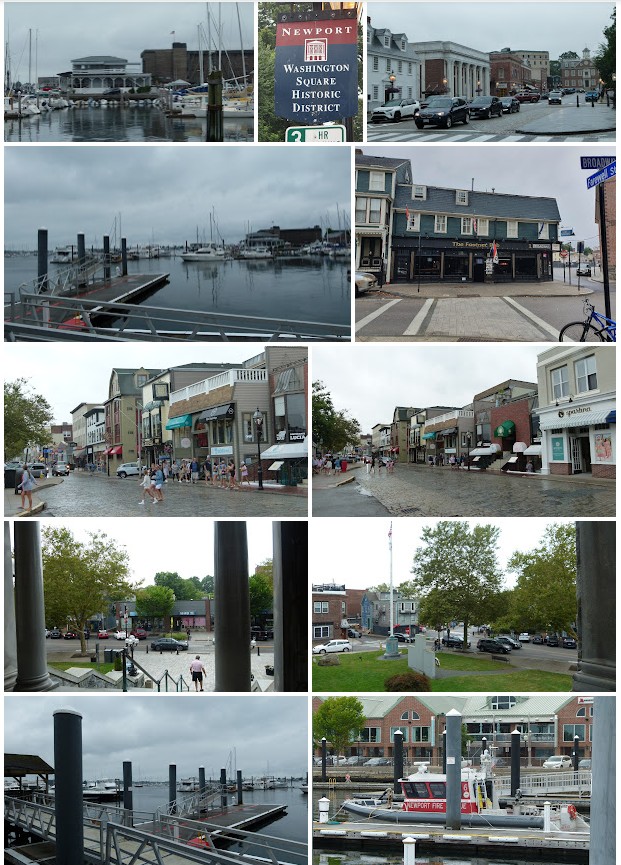 The weather was variable that day.
The weather was variable that day.
The following day was spent driving down the coast to New York, mostly in Connecticut.
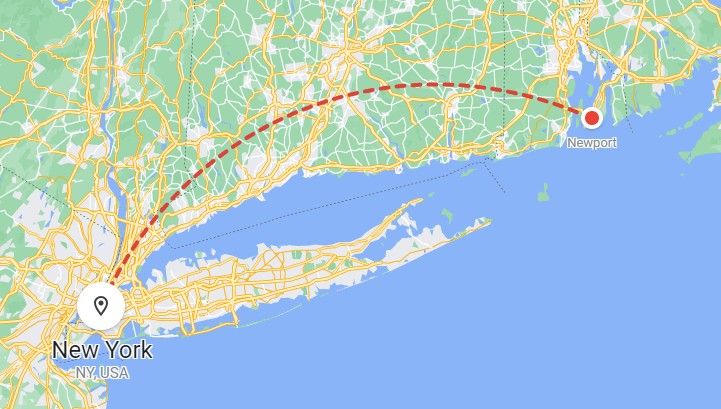
Driving into New York was once very familiar to me. This time the traffic seemed worse. I dropped Wendy and the bags at the Holliday Inn, Times Square. Then my problem was to find a petrol (gas) station, to fill the tank prior to dropping off the car; followed by a three block walk back to the hotel. That all went better than expected and we were soon out on the town for dinner.
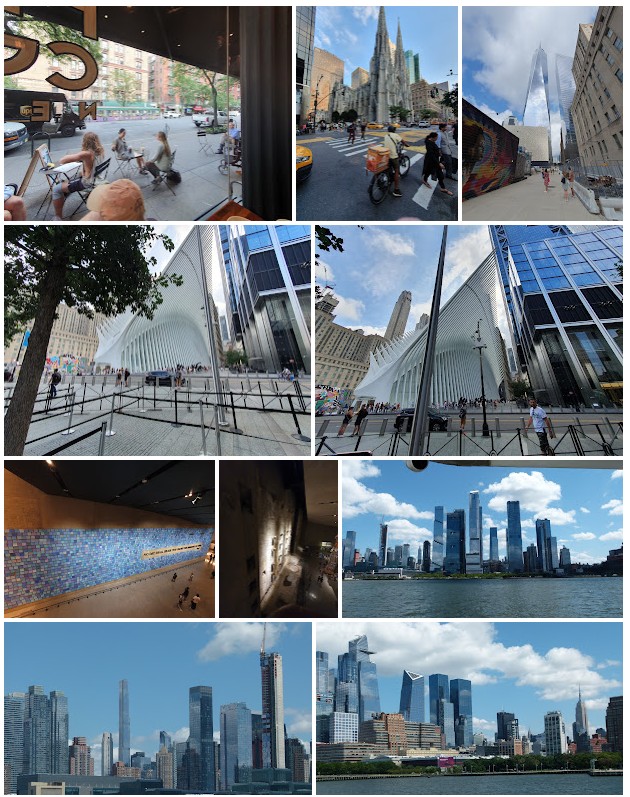
The next morning, Wendy had some shopping to do, at Johnny Was, her latest go-to, so, I walked with her to the store near Columbus & 43, where I had a coffee and enjoyed being back in New York (top-left of the pictures above).
Later we went down-town to ground zero, where the twin towers of the World Trade Centre once stood - until the 11th of September 2001.
On that fateful day, Wendy rang me in Melbourne to tell me to turn on the TV, to see the south tower already hit by a plane. Then came a second, passenger aircraft, plunging in.
|
The first part of the attack - now very familiar images |
Then a third.
Both towers now on fire. We watched in horror as hundreds of people leapt to their deaths rather than be burnt alive. Little specks. Then, in sequence, the towers pancaked down in a vast cloud of grey ash.
Before I arrived in New York our offices had been in the World Trade Centre but we had recently moved to W51st, mid-town. Nevertheless, I went there on several occasions, particularly with visitors to New York. It was a change from the Empire State Building and quite a different view.
|
Around 1978 I made this short Super 8 movie snippet on the South Tower Observation Deck - World Trade Center NY At the beginning, I left in a brief glimpse of a subway train covered in graphiti - a blast from the past At the end you can see a defunct and long-gone section of the West Side Drive - also covered in graphiti |
The 9/11 memorial now occupies the the old foundations, a quarter of a mile below. The twin towers have been replaced by a single, taller, building: One World Trade Center, again the tallest building in New York.
The memorial goes to a great deal of trouble to record every single death with photographs and eulogies and names recited. There are also selected 'shards' of wrecked equipment from the buildings and remembrance of the heroism of the first responders who lost their lives - a firetruck and so on.
The blue stripe across the image (second from the bottom- left) is made up of individual plaques recording those who died that day and the banner is a quotation from the Roman poet Virgil: "No day shall erase you from the memory of time."
On the surface, this seems a dubious quotation to use. No one actually remembers the Heros to whom Virgil was referring, except in myth.
Yet, it's certainly true at a fundamental level. Every person who has ever lived and died changed the present, simply by being, and thus changed the future of the world - as did Virgil's Heros.
The future changed an awful lot that day.
***
Later, we went for a walk in Central Park and I went to the Metropolitan Museum - the Met - old familiar territory. Wendy had more shopping to do. I took a few photos that you can see by clicking on picture below (not as many as I took last time and probably a few duplicates).
There was a special exhibition of Dutch masterpieces. and the MET has, perhaps, the best early civilisations collection in the world.
Too much to take in.
Enough just enjoying the city. It was time to do something touristy, like going for a tourist boat trip on the harbour. This was not something I did when I lived here. It was a true tourist experience (rip-off) time wasting; manipulative; and a lot more expensive than the Statten Island ferry. But it served to highlight how much the city has grown and modernised since we were here in 2007. Spectacular.
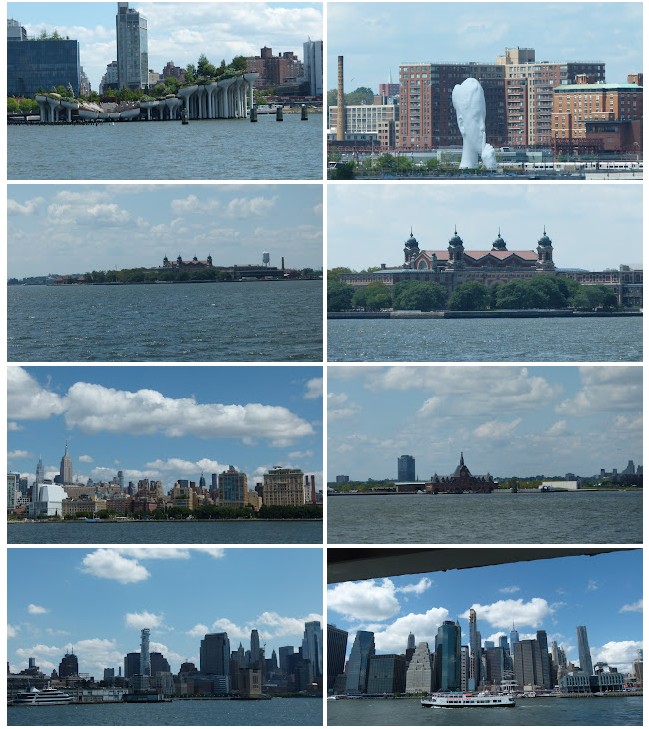
Later, we walked in SoHo and the Village.
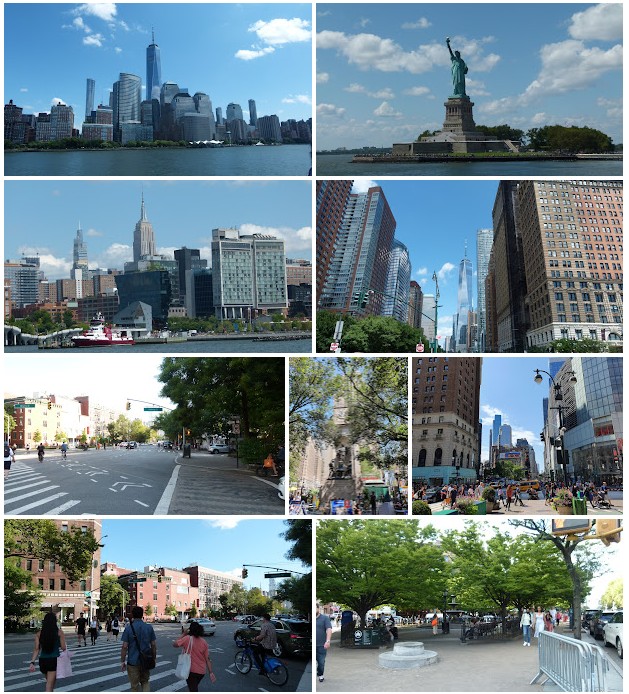 You can see more pictures of New York, from our 2007 trip, by clicking on the pictures above
You can see more pictures of New York, from our 2007 trip, by clicking on the pictures above
Needless to say we used the subway system to get around - as almost everywhere in the world now - you buy a card and top it up as you go. One big change, from the late 70s, is the lack of graphiti in the subway and the clean, stainless-steel, air-conditioned trains. Another, is a much diminished feeling of interracial tension when riding them.
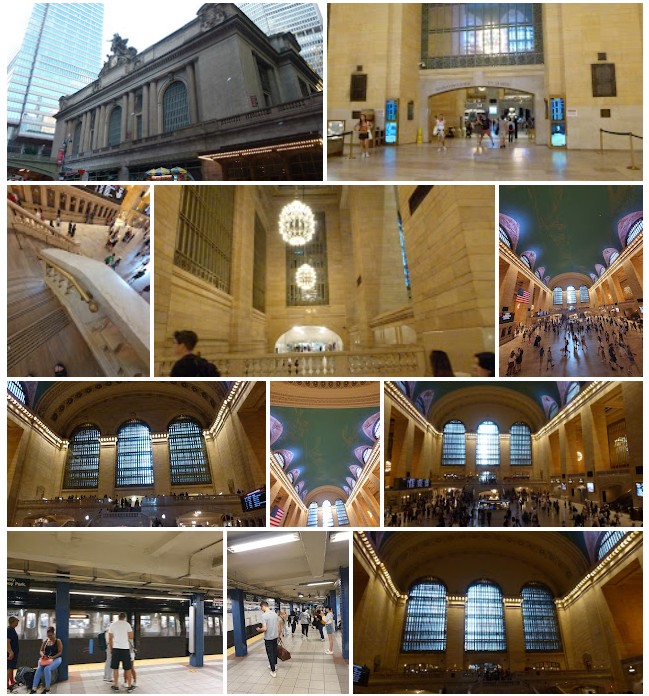 Grand Central Station
Grand Central Station
Going to the Bronx - no worries.
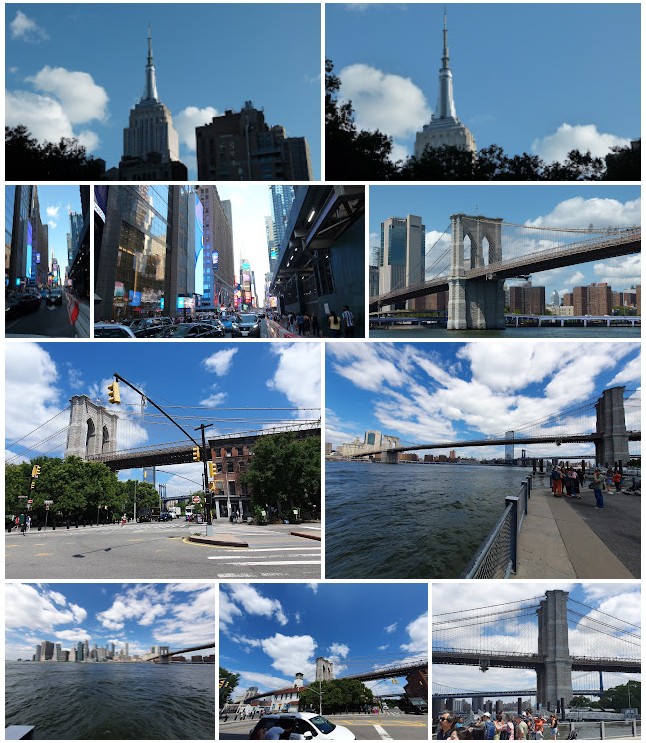
What a city. I ❤️ NY.
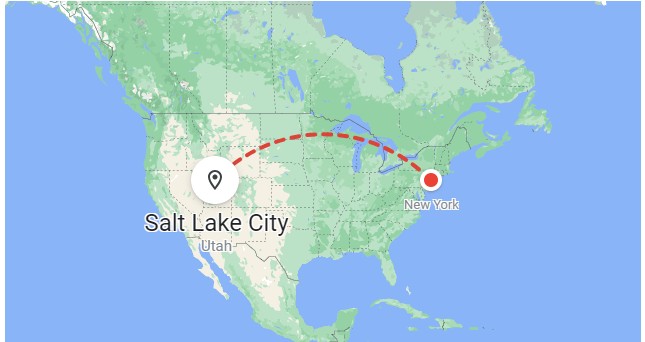
Salt Lake City, Utah was once in Mexico - but God was not on Spain's side - just listen to Bob..
|
"And the names of the heroesI was made to memorizeWith guns in their handsAnd God on their side" |
A bit of a contrast to New York. Salt Lake City was founded by Latter-day Saints - the Mormons.
In 1844 Joseph Smith, the founder of Mormonism, was shot dead during a dispute with some other evangelical Christians over their printing press that he had destroyed after they defamed him over the Mormon practice of polygamy (multiple wives, as opposed to keeping one wife and one or more public mistresses - quite legal - like numerous 'Royals'). This was a distinguishing feature of his new 'Latter Day' religion, that began to gather converts from other sects in large numbers.
Polygamy has support in Old Testament Scripture where a number of Jewish men are polygamous. Solomon, third king of Israel (and according to Mat. 1:1, the ancestor of Jesus), is said to have had a harem that included 700 wives and 300 concubines. Thus, polygamy is permitted in Islam. But it was forbidden by Roman Law and thus, the early Christian Church, also forbade it. Interestingly, it is no longer a feature of the Mormon religion.
When Smith was murdered, his rapidly growing movement fractured, as did Islam when their Prophet died. The majority rallied around Brigham Young and fled persecution to Zion (Salt Lake City). The others went elsewhere and some persist today.
Thousands of converts, many from Britain, Denmark and Germany, followed, pushing handcarts, provided by Brigham's American followers.
Here they built yet another Temple, a nearby a church and a Tabernacle - world famous for its choir.
The huge Temple is not open at the moment. It's presently having it's foundations shored up. They should have listened to the Methodists: "Build upon the rock and not upon the sand"
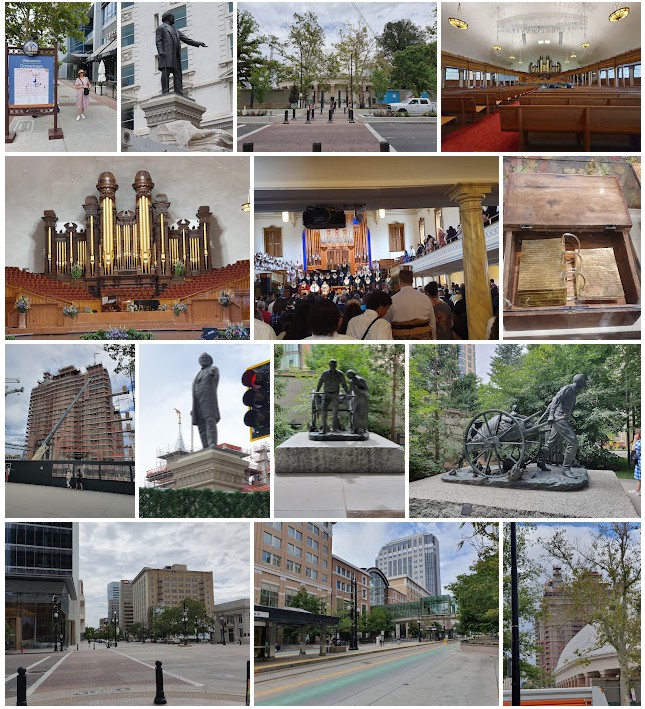 The tabernacle; The Church; Brigham Young (twice); A replica of the golden plates (originals now back in Heaven)
The tabernacle; The Church; Brigham Young (twice); A replica of the golden plates (originals now back in Heaven)
The handcart memorial; Downtown; Tram stop
At a more secular level, Salt Lake City is a ski town, in winter. The city is relatively flat, so no skiing back to your door, but there are good mountains close by.
So, it's distinguished by quite a bit of accommodation surrounded by wide open spaces and expanses of car parking area. There's a local light rail, that's free within the down-town area.
The 'sisters' and 'brothers' who circulate in the temple area are very polite so it's hard not the be reminded of the musical "The Book of Mormon".
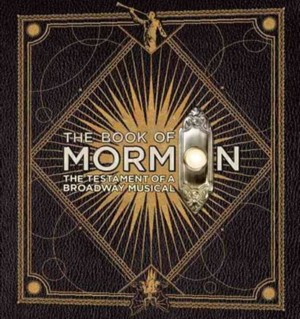 To read more click on the book
To read more click on the book
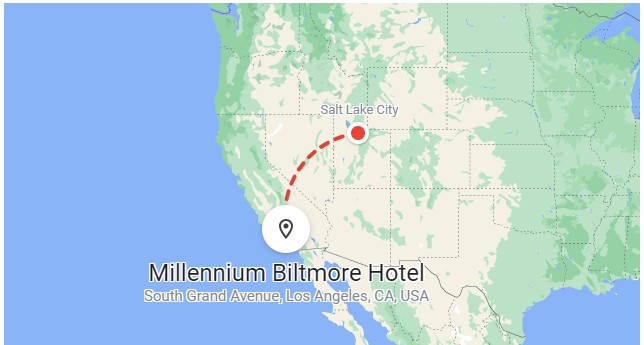
In the past, when visiting Los Angeles, we have stayed around Hollywood somewhere. You can see the 2012 photo album by clicking on the pictures below (in Hollywood). If you are contemplating visiting, you may be interested to read about out unfortunate experience 2017 here...
This time we rejected Hollywood in favour of downtown LA. The Millennium Biltmore. It's central and a lot nicer than the places we've stayed over there.
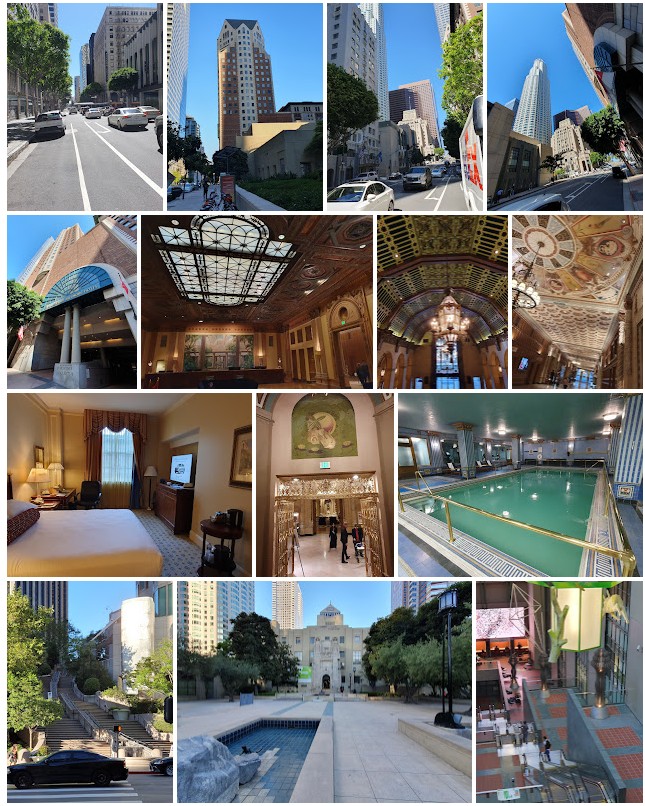 The Millenium Biltmore Hotel and the nearby Public Library
The Millenium Biltmore Hotel and the nearby Public Library
- lower right - a most impressive building
During the afternoon I spent an hour or so in the Public Library, waiting for Wendy to return from her grand shopping expedition to the outlets. I also took a walk up the street (hill) to the local Art Museums: The Museum of Contemporary Art (MoCA) and the BROAD. I would visit the BROAD another day.
To see some of the artworks at MoCA and BROAD click on the pictures below.
I subsequently discovered that they can be reached, without climbing the hill, by staying on the lower streets. These lead around to the local produce market and the Angels Flight Funicular. You know: 'Funiculi Funicular'. It costs $1 to be taken up. But it's a longer walk.
There is also a bus service, for less than a dollar, but it's infrequent or you can take the Metro to the markets (one stop).
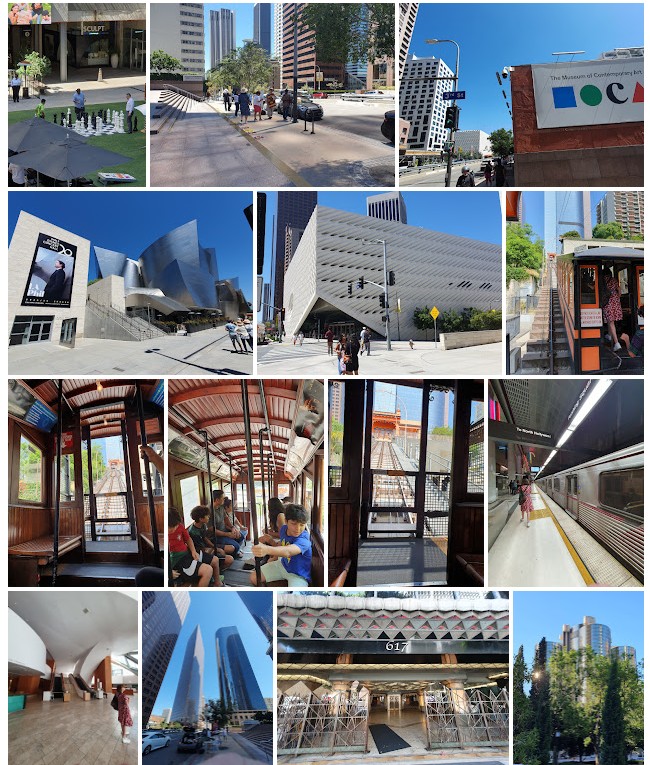 Chess players near the Mall metro station; The gallery/concert precinct; Angels Flight Funicular; In the metro station;
Chess players near the Mall metro station; The gallery/concert precinct; Angels Flight Funicular; In the metro station;
In the Walt Disney Concert Hall foyer; Local architecture of interest (Art Deco etc)
To see some of my photos of the art in MoCA and the BROAD click on the image above (top-right).
The BROAD is adjacent to the architecturally spectacular Walt Disney Concert Hall. It's more impressive outside than in the foyer (see above) but I understand that the auditorium itself is equally marvellous.
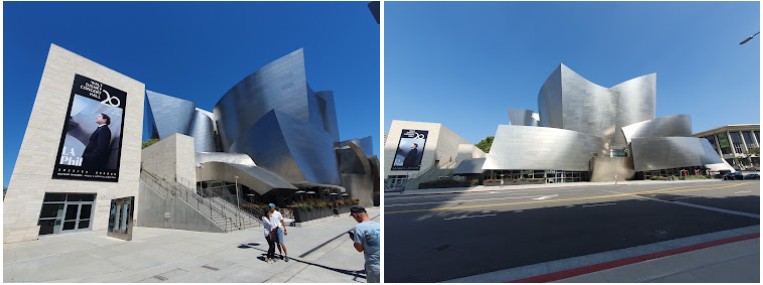 Walt Disney Concert Hall, LA. Architect: Frank Gehry
Walt Disney Concert Hall, LA. Architect: Frank Gehry
Of course we couldn't go to LA and not visit Hollywood. So we took the LA Metro (senior off-peak): Pershing Square to Hollywood (8-9 stops) $0.35.
But it is and always has been a bit trashy.
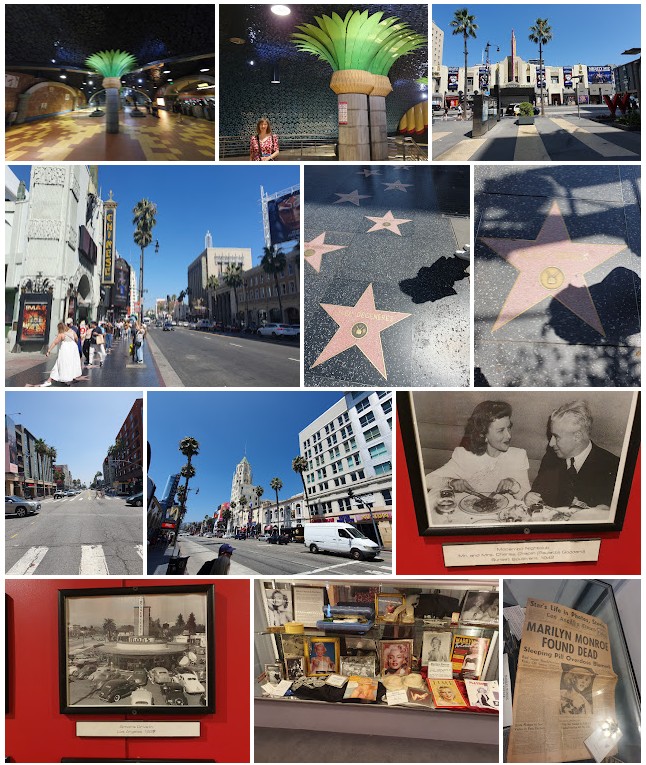 To see more photos of Hollywood, from the LA 2012 album,
To see more photos of Hollywood, from the LA 2012 album,
click on the pictures above
We went for a ramble down Hollywood Boulevard, over the 'star's set in the pavement, and there was Alex Trebek, the recently deceased host of one of my favourite TV shows - Jeopardy!.
Charlie Chaplin and Paulette Goddard, and Marilyn Monroe are, of course, immortalised in the Hollywood Museum.
Paulette features in 'Stardust' a novel by Joseph Kanon, set in that era, mostly in Hollywood, that I had just read. Seeing the picture seemed serendipitous!
I can recommend Stardust. It's great mystery/detective/spy story, historically detailed, beautifully written.
***
Further down is the Chinese Theatre, where those who have 'made-it' in 'Tinseltown' can leave their hand and footprints in the cement. Several of the women and one or two men had tiny feet If you can't read them here they are in the attached album at the end.
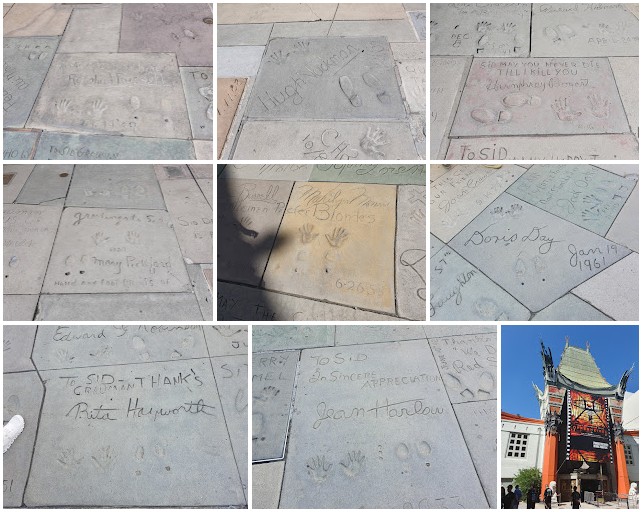
***
On the last day of our trip the plane didn't leave until late so it was back to the Broad for me and more shops for Wendy. We still had several hours to spare. Wendy having some last-minute shopping to attend to, so I decided to take in a movie. What was showing this arvo? I could catch a bus. Might it be to Barbie or Oppenheimer?
When we were in Canada in July we saw enough US TV not to miss the hype when Oppenheimer got its release (Christopher Nolan's new ‘blockbuster’).
This was another instance of serendipity, as I had just ordered Joseph Kannon’s ‘Los Alamos’, for my Kindle, having recently read his brilliant ‘Stardust’ (see above). And here we were in Hollywood on the last day of our trip. Stardust indeed!
To read my review of the movie click on the image below:
Go and see Oppenheimer, you will think about it for days afterwards.
***
Now, after six weeks, it was time to go home:
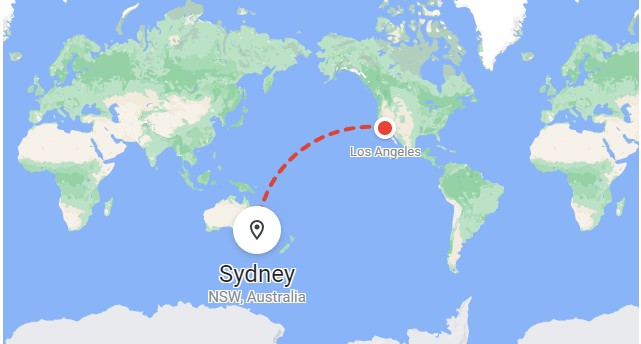
To see the remaining photographs (not already linked above) click on the image below:
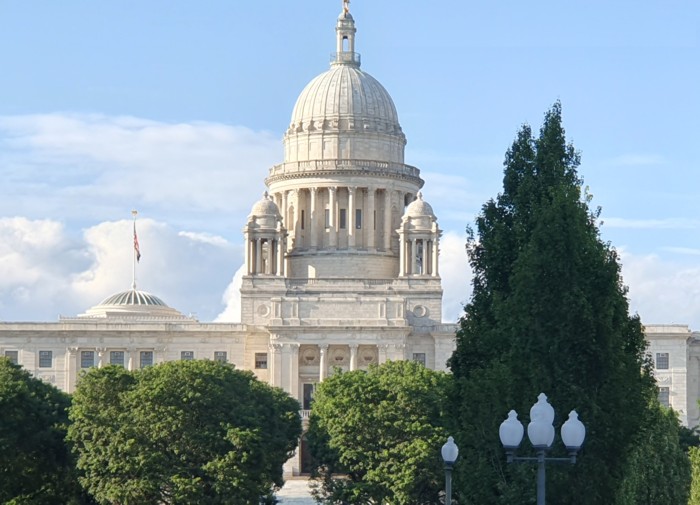 State Capital building Rhode Island
State Capital building Rhode Island

